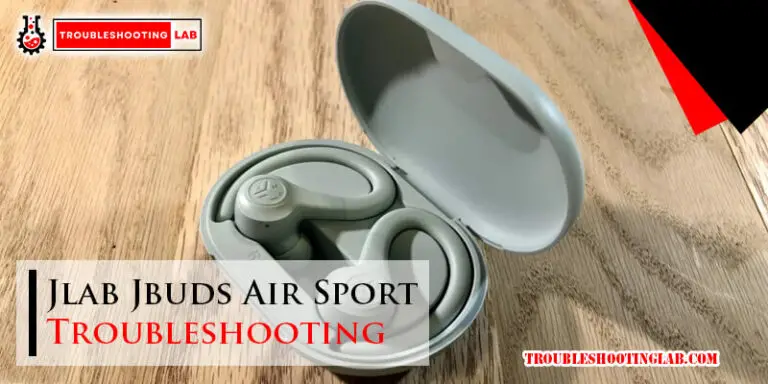Kenmore Ultra Wash Dishwasher Troubleshooting: Expert Solutions for Spotless Dishes!
To troubleshoot a Kenmore Ultra Wash dishwasher, first check for clogs, ensure water supply, and clean filters. Refer to the manual for specific guidance.
Kenmore Ultra Wash dishwashers are known for their high-quality performance, but like any appliance, they may encounter issues from time to time. If you are experiencing problems with your dishwasher, it is important to troubleshoot the potential causes to identify and resolve the issue.
By following some simple steps, you can diagnose and fix common problems with your Kenmore Ultra Wash dishwasher, saving you time and money on professional repairs. In this guide, we will explore some common troubleshooting techniques to help you get your dishwasher back up and running smoothly.

Common Dishwasher Issues
Common Dishwasher Issues:
Dishes Not Coming Out Clean
If dishes are still dirty after a wash cycle, check the water temperature and detergent usage.
Leaking Water
Check for loose or damaged seals and ensure proper loading of dishes to prevent leaks.
Checking For Simple Problems
When your Kenmore Ultra Wash Dishwasher is not functioning properly, it’s essential to start troubleshooting by checking for simple issues that can be easily resolved. Here’s how to inspect the dishwasher for common problems that may arise during its operation.
Inspecting The Spray Arms
To begin with, examine the spray arms in your Kenmore Ultra Wash Dishwasher for any clogs or blockages, as these can hinder the water flow and result in poor cleaning performance. Look for any food particles or debris that might be trapped in the spray arm nozzles.
Examining The Door Gasket
Next, ensure the door gasket of the dishwasher is intact and properly sealed. Inspect for any signs of wear, tear, or damage to the gasket that could be causing leaks or inadequate sealing during the wash cycle.
Cleaning And Maintenance
Kitchen appliances like the Kenmore Ultra Wash dishwasher play a crucial role in maintaining a tidy and efficient kitchen. Regular cleaning and maintenance are essential to keep this appliance running smoothly. Here are some straightforward and effective tips and tricks for cleaning and maintaining your Kenmore Ultra Wash dishwasher.
Cleaning The Filter
One of the most important aspects of maintaining your Kenmore Ultra Wash dishwasher is cleaning the filter regularly. The filter prevents food particles and debris from clogging the dishwasher’s drainage system. Here’s how you can clean the filter:
- Remove the bottom rack of the dishwasher to access the filter.
- Twist and remove the filter assembly, usually located at the bottom of the dishwasher.
- Inspect the filter for any food particles or debris and gently wash it under running water to remove any buildup.
- Once cleaned, reassemble the filter and place it back into the dishwasher.
Using Specialized Dishwasher Cleaners
Regularly using specialized dishwasher cleaners can help maintain your Kenmore Ultra Wash dishwasher’s performance and cleanliness. These cleaners are designed to penetrate and remove stubborn food residue, grease, and limescale, leaving your dishwasher sparkling clean and odor-free. Here’s how you can effectively use specialized dishwasher cleaners:
- Ensure the dishwasher is empty before starting the cleaning process.
- Place the specialized dishwasher cleaner in the detergent compartment or follow the instructions on the product packaging.
- Select a hot water cycle to allow the cleaner to circulate throughout the dishwasher.
- Run the dishwasher on a complete cycle as per the cleaner’s instructions.
- Once the cycle is complete, enjoy a fresh and clean dishwasher ready for the next load of dishes!
Addressing Water Drainage Problems
If you’re experiencing water drainage problems with your Kenmore Ultra Wash dishwasher, don’t worry. This troubleshooting guide will help you identify and resolve any issues causing improper drainage. Remember to always unplug your dishwasher and turn off the water supply before attempting any troubleshooting steps.
Clearing The Drain Hose
If your dishwasher isn’t draining properly, the first thing you should check is the drain hose. A clogged or kinked drain hose can prevent water from exiting the dishwasher effectively. Here’s how to clear the drain hose:
- First, locate the drain hose at the back of your dishwasher. It’s usually connected to the sink drain or garbage disposal.
- Carefully detach the drain hose from the dishwasher and inspect it for any obstructions or kinks.
- If you find any clogs or debris, use a long brush or pipe cleaner to gently remove them. Be cautious not to damage the hose.
- Once you’ve cleared the drain hose, reconnect it securely to the dishwasher and make sure it is positioned correctly.
Checking The Garbage Disposal
In many cases, a malfunctioning garbage disposal can cause water drainage problems in your dishwasher. Here’s how to check the garbage disposal:
- Start by turning off the power to the garbage disposal and unplugging it.
- Inspect the garbage disposal for any blockages or debris that may be preventing proper drainage.
- Clear any clogs or debris using a long-handled utensil or a plunger, being careful not to damage the disposal blades.
- Once you’ve cleared the garbage disposal, plug it back in and restore power.
By following these troubleshooting steps and ensuring that the drain hose and garbage disposal are clear of any obstructions, you should be able to address most water drainage problems with your Kenmore Ultra Wash dishwasher. Remember to run a test cycle after making any adjustments to verify that the issue has been resolved.
Advanced Troubleshooting
When it comes to troubleshooting your Kenmore Ultra Wash Dishwasher, it’s important to have a solid understanding of its various components. In this section, we will discuss some advanced troubleshooting steps that can help you identify and resolve common issues you may encounter. Remember to always follow safety precautions and consult the user manual before attempting any repairs.
Testing The Heating Element
If you find that your dishes are coming out of the dishwasher not hot enough or still wet, the heating element may be the culprit. The heating element is responsible for heating the water during the wash and rinse cycles, ensuring that your dishes are thoroughly cleaned and dried. To test the heating element, follow these steps:
- Turn off the dishwasher and unplug it from the power source.
- Locate the heating element, usually positioned at the bottom of the dishwasher.
- Visually inspect the heating element for any signs of damage, such as discoloration or breaks.
- Using a multimeter set to the resistance or ohms setting, test the continuity of the heating element by placing the meter leads on each terminal.
- If the meter displays a reading of zero or infinity, it indicates a faulty heating element that needs to be replaced.
Examining The Water Inlet Valve
If your dishwasher is not filling with water or has a slow or inadequate water flow, the water inlet valve could be the issue. The water inlet valve is responsible for controlling the water entering the dishwasher. To examine the water inlet valve, follow these steps:
- Turn off the dishwasher and unplug it from the power source.
- Locate the water inlet valve, typically located behind the lower panel or near the bottom of the dishwasher.
- Inspect the valve for any signs of damage, such as cracks or leaks.
- Depending on the model, you may need to remove the valve to perform a more thorough inspection. Refer to the user manual for specific instructions.
- If you suspect a faulty water inlet valve, use a multimeter to test its continuity. Place the meter leads on the terminals of the valve and check for a reading of resistance or continuity.
- If the meter displays a reading of zero or infinity, it indicates a faulty water inlet valve that needs to be replaced.
By testing the heating element and examining the water inlet valve, you can diagnose and address common issues with your Kenmore Ultra Wash Dishwasher. Remember, if you are unsure or uncomfortable with any troubleshooting steps, it’s always best to consult a professional technician to ensure the optimal functioning of your dishwasher.
Frequently Asked Questions On Kenmore Ultra Wash Dishwasher Troubleshooting
How Do I Fix A Kenmore Ultra Wash Dishwasher That Won’t Start?
To fix a Kenmore Ultra Wash dishwasher that won’t start, check the power supply, ensure the door is closed properly, and reset the control panel.
Why Is My Kenmore Ultra Wash Dishwasher Not Cleaning Dishes Properly?
If your Kenmore Ultra Wash dishwasher is not cleaning dishes properly, make sure the spray arm is not clogged, the water inlet valve is functioning correctly, and the detergent dispenser is filled correctly.
How Can I Resolve A Kenmore Ultra Wash Dishwasher That Is Leaking Water?
To resolve a Kenmore Ultra Wash dishwasher that is leaking water, check for damaged gaskets or seals, inspect the drain hose for blockages, and ensure the dishwasher is level.
What Should I Do If My Kenmore Ultra Wash Dishwasher Is Making Strange Noises?
If your Kenmore Ultra Wash dishwasher is making strange noises, inspect and clean the spray arm and filter, check for any loose objects inside the dishwasher, and make sure the dishwasher is level and secure.
How Do I Reset The Control Panel On My Kenmore Ultra Wash Dishwasher?
To reset the control panel on a Kenmore Ultra Wash dishwasher, press the “High Temp” and “Start” buttons simultaneously and hold for three seconds until the display resets.
Conclusion
Troubleshooting a Kenmore Ultra Wash dishwasher can be straightforward with the right guidance. By following the steps mentioned in this blog post, you can resolve common issues and ensure your dishwasher functions optimally. Understanding these troubleshooting techniques will save you time and money in the long run.
Keep your dishwasher running smoothly with these helpful tips.






